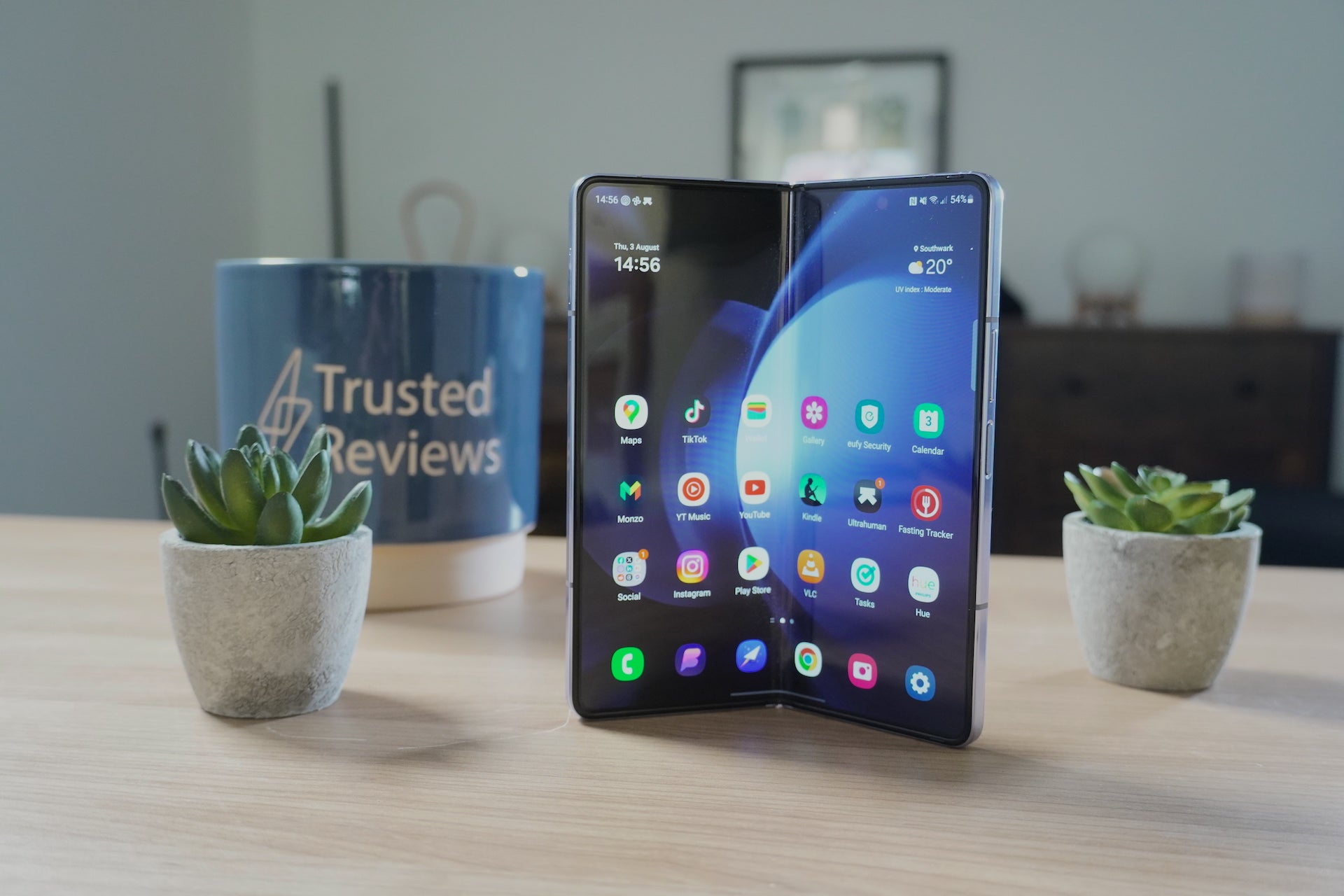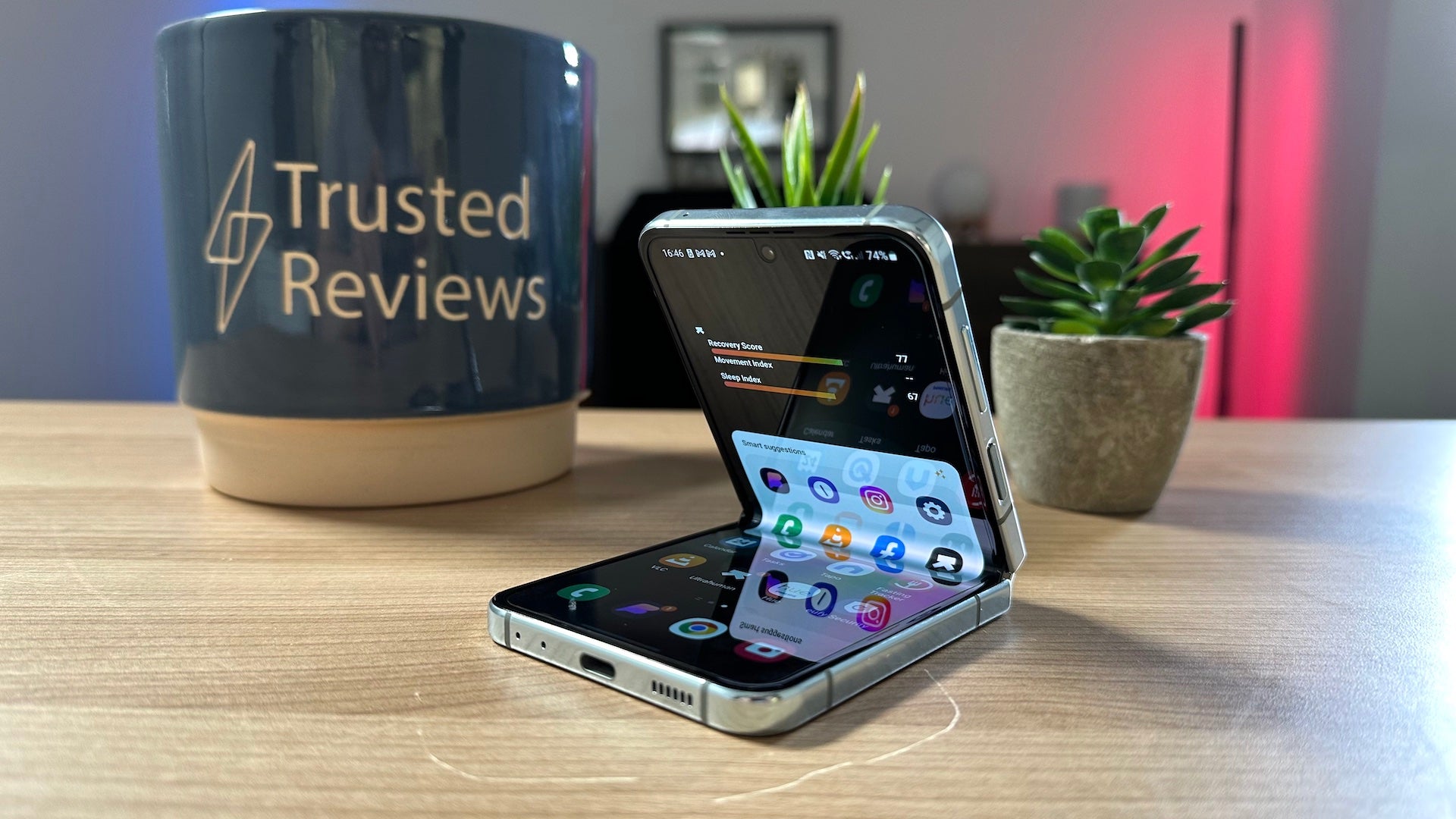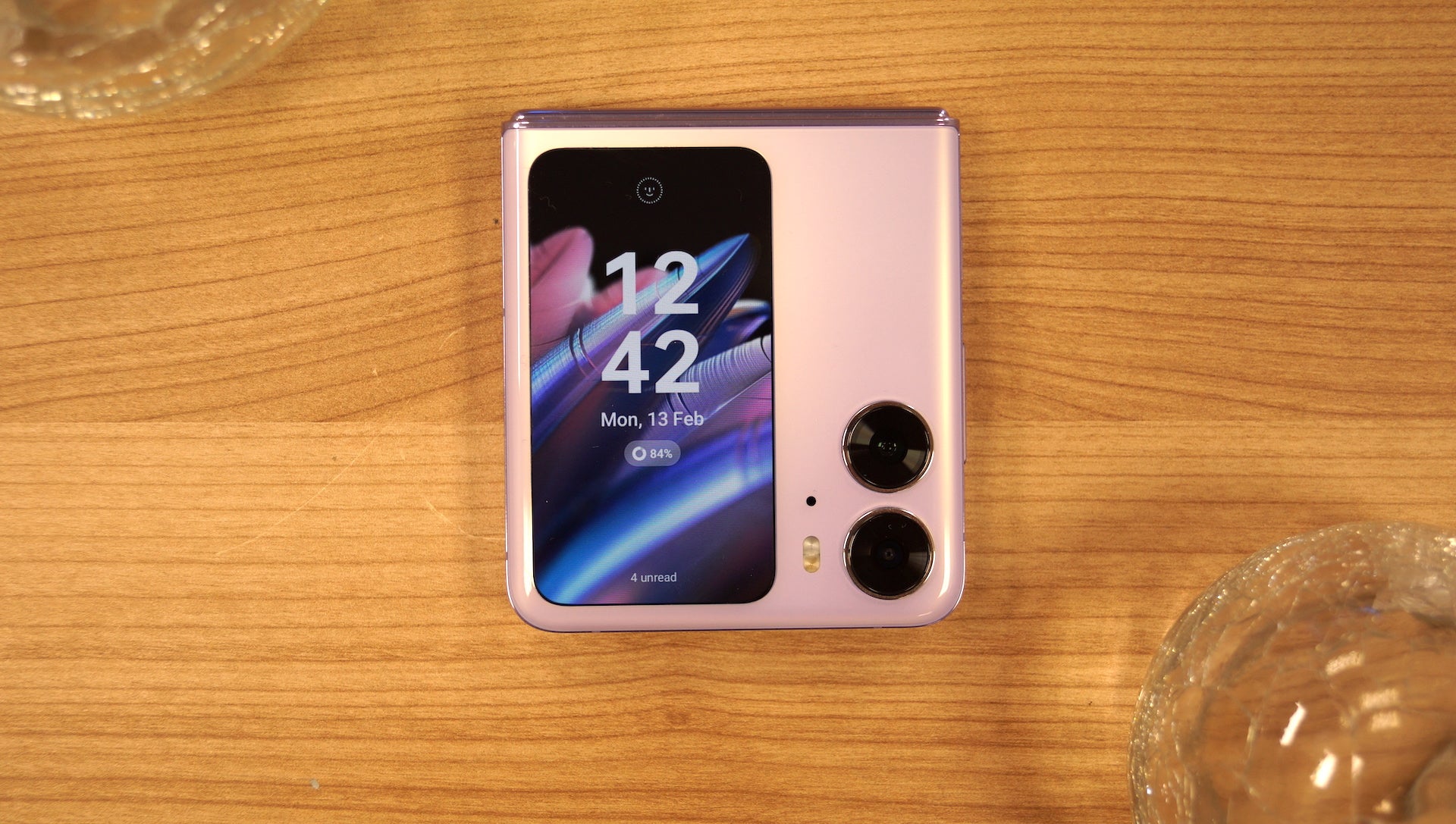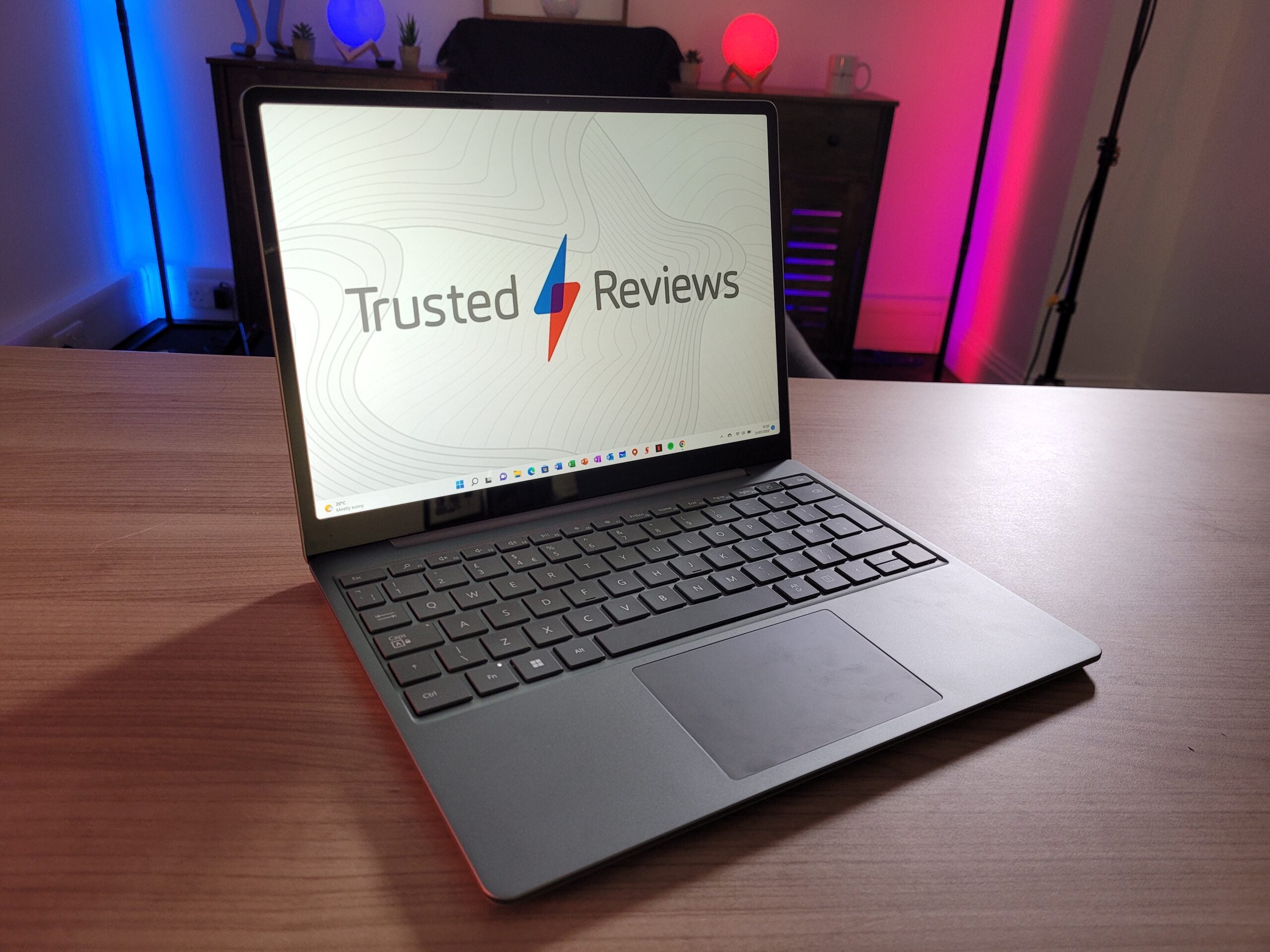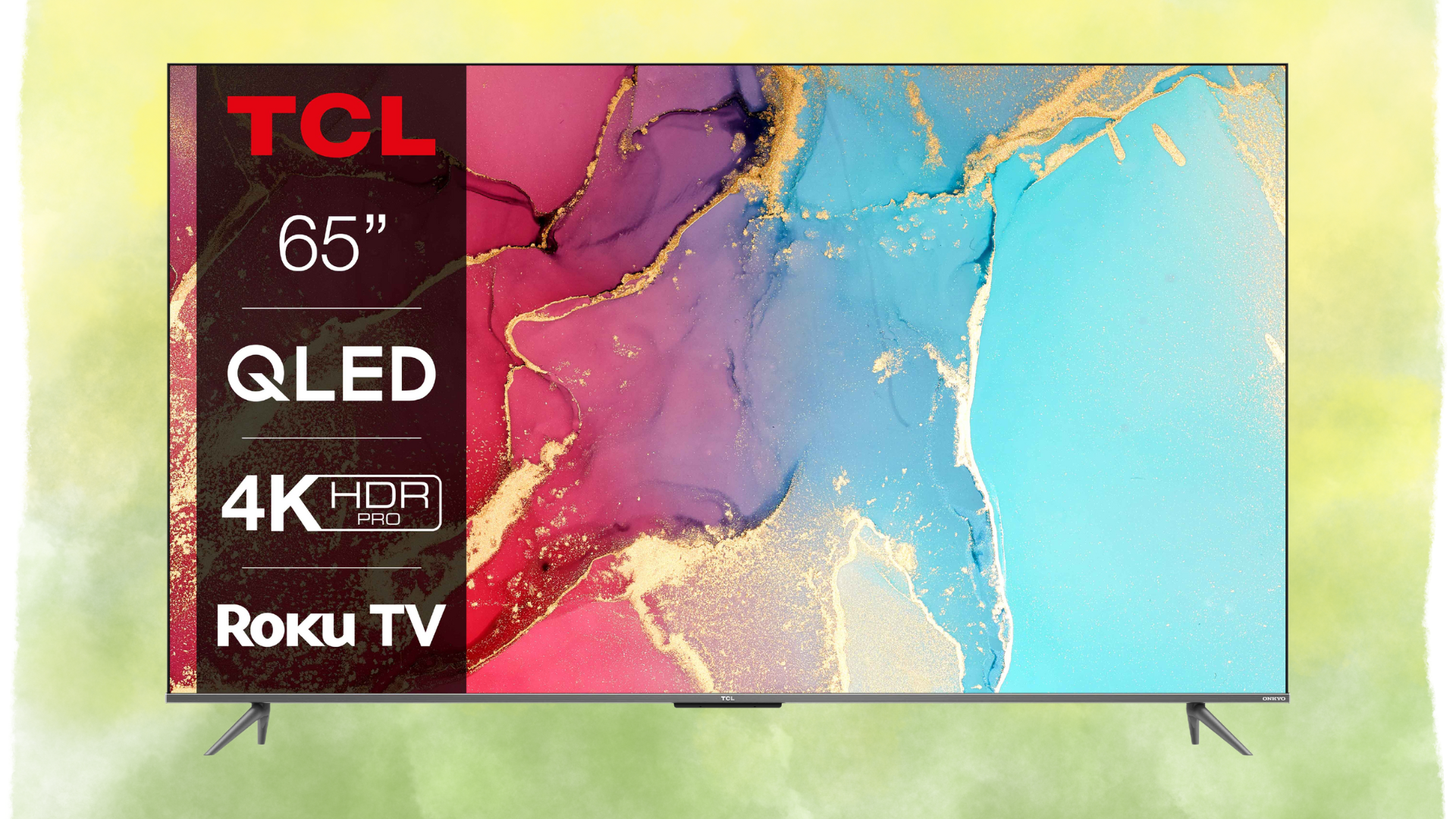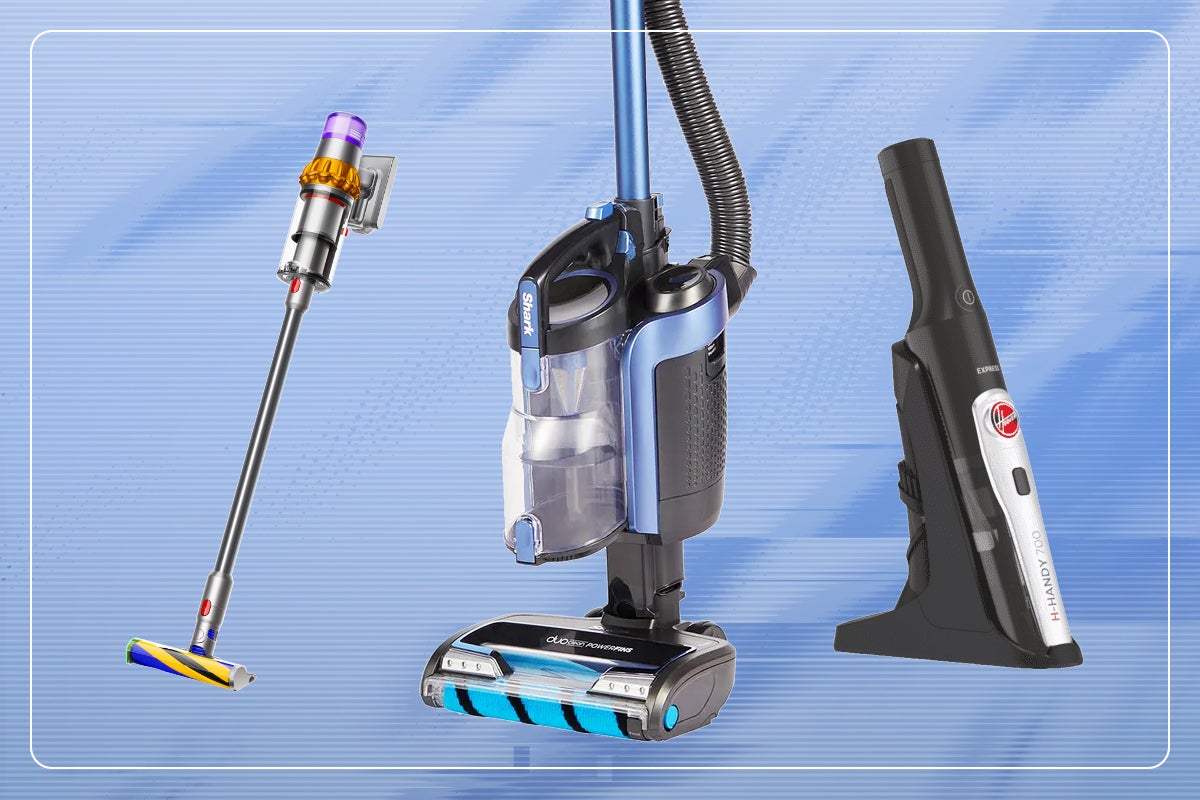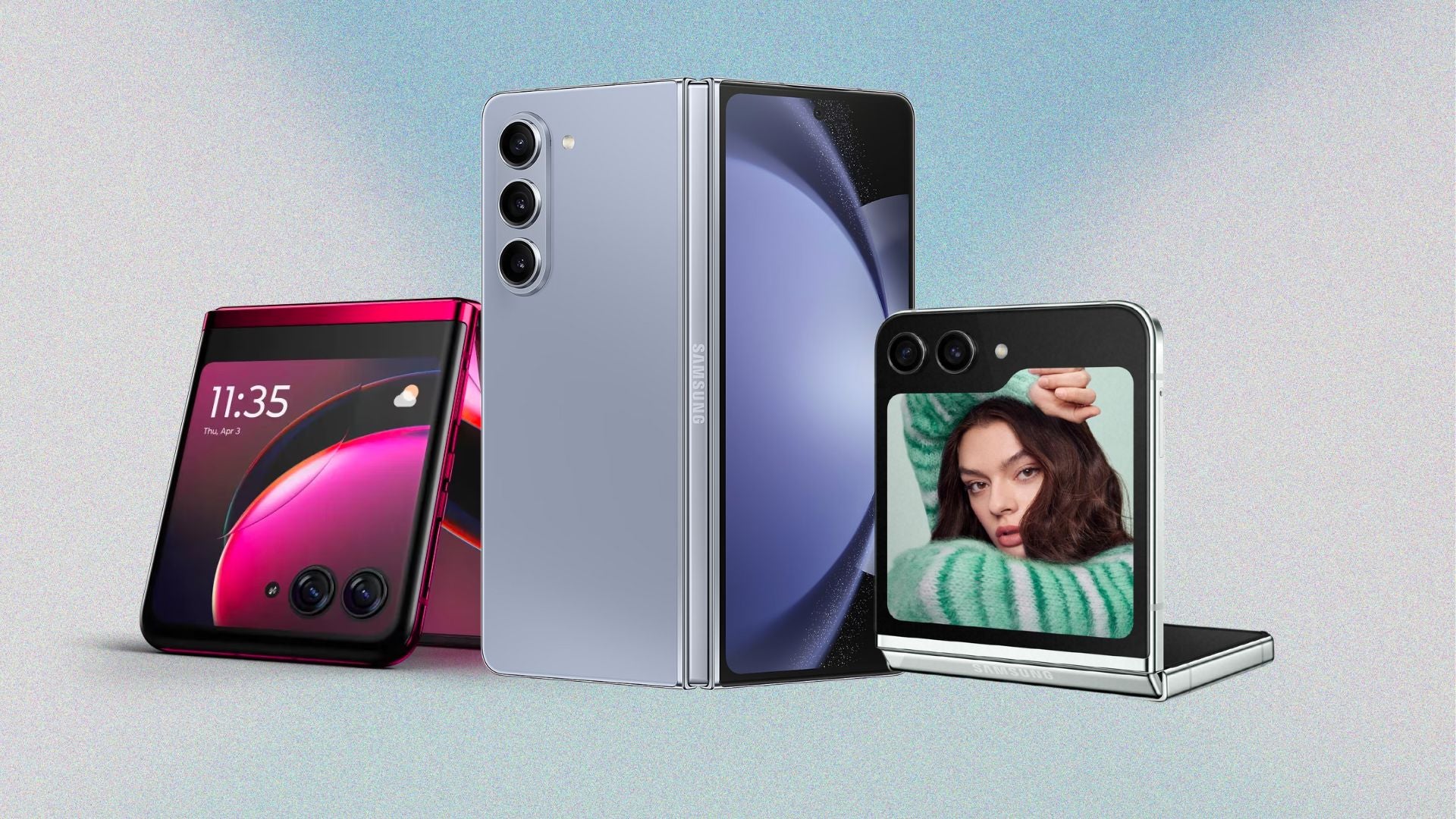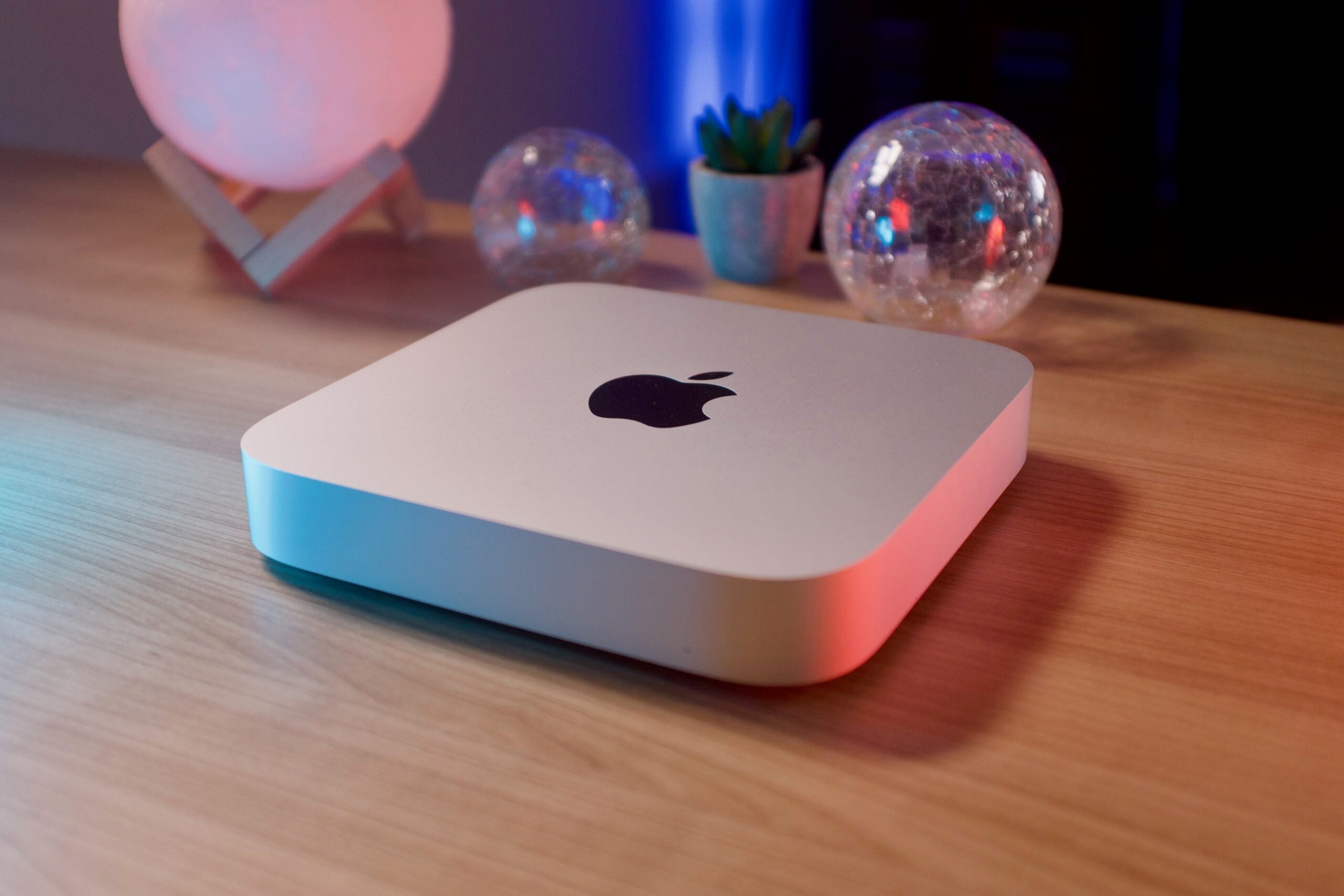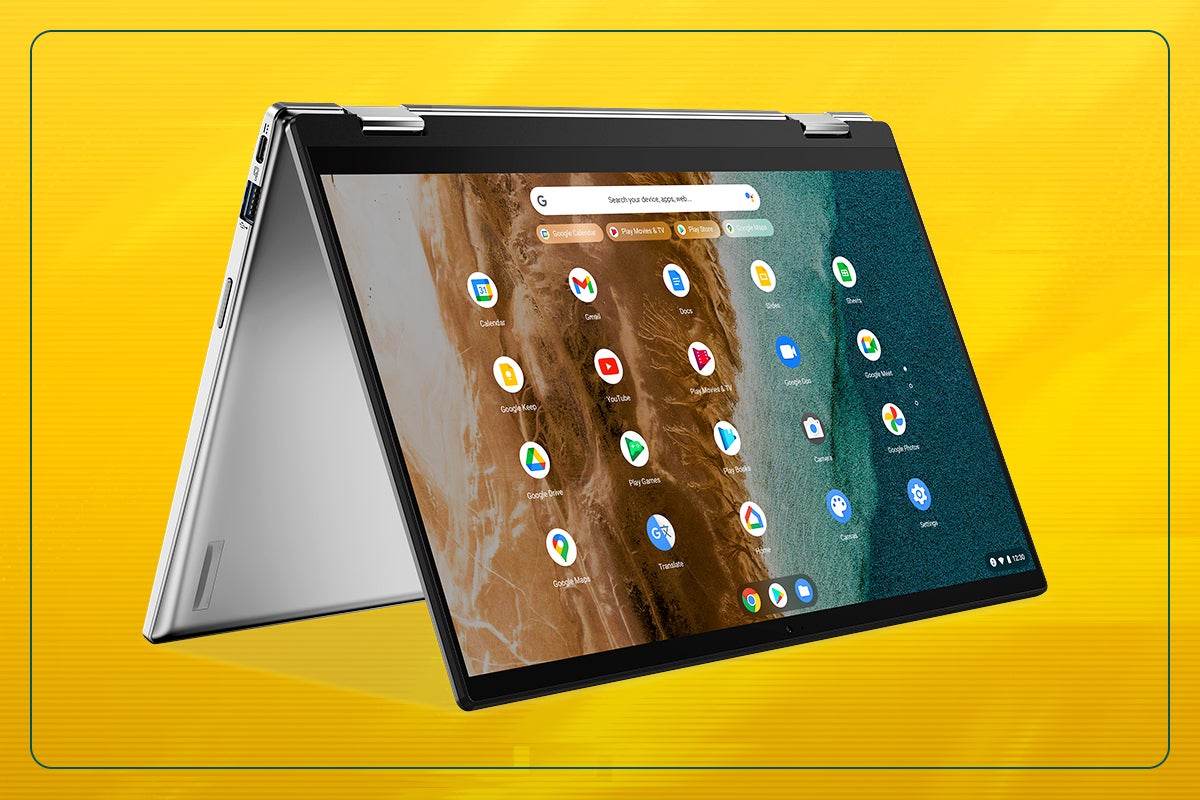Best smartphones 2023: The best phones tested, reviewed and ranked
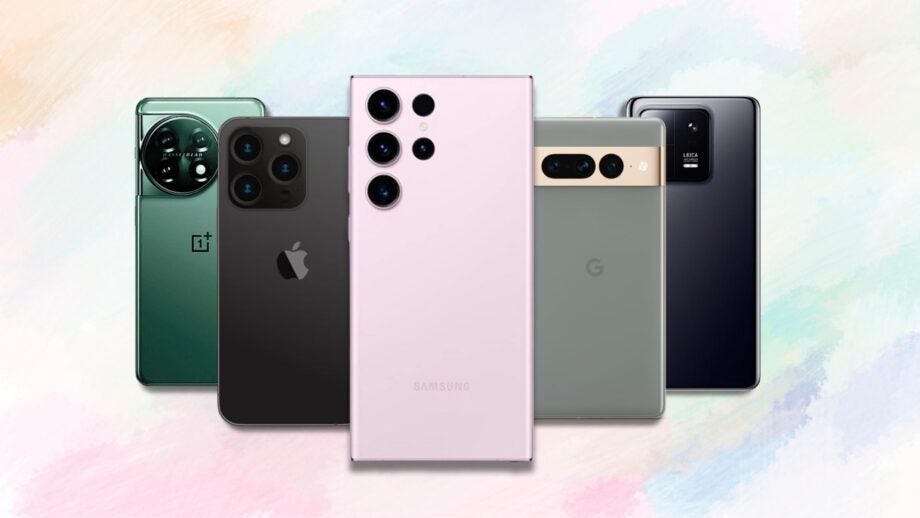
It’s important to get your smartphone purchase right. Nobody wants a phone that can’t last a full day on a single charge, or takes unflattering photos of your friends and family. That’s why we’ve decided to help out, compiling a list of the best smartphones that we’ve reviewed in recent months.
Our team of experts review a lot of phones each year – flagship choices, affordable options and pretty much everything in between. We have a thorough testing process for smartphones, which includes conducting benchmark tests, draining the battery, watching video, as well as day-to-day use. Those that impress and earn at least a 4-star rating (out of 5) are considered for this best smartphones list.
We’ve also made sure to include a variety of smartphone options, just in case you crave a specific high-end feature such as a top-notch camera or game-ready performance.
We’ve included both iPhones and Android options, just in case you’re committed to an operating system and there are some unique choices, like those with foldable displays that can have larger, or smaller, screens. There’s a good variety of phones available now.
We also have curated other best lists if you’re looking for something a little more specific. Our best camera phone round-up focuses on a device’s photographic and videography skills and our best gaming phone list focuses on those that excel at on-the-go gaming. And if you’re more concerned about cost, then check out our best cheap phone and best mid-range phone lists, which focus solely on more affordable options.
Which is the best smartphone 2023?
- The best flagship Android – Samsung Galaxy S23 Ultra – check price
- The best iPhone – iPhone 15 Pro Max – check price
- The best software – Pixel 8 Pro – check price
- The best compact iPhone – iPhone 15 Pro – check price
- The best big Android – Xiaomi 13 Pro – check price
- The best value – OnePlus 11 – check price
- The best for gaming – Asus ROG Phone 7 Ultimate – check price
- The best clamshell foldable – Motorola Razr 40 Ultra – check price
- The best book-style foldable – OnePlus Open – check price
- The best mid-range phone – Google Pixel 7a – check price
How we test
Every phone included in the below list has been properly tested and used for an extended period by one of our product experts. We don’t review phones based purely on specs or a manufacturer’s claims – we use them as our everyday devices for at least five days and usually for much longer.
If you read a phone review on Trusted Reviews, you’ll know the reviewer has popped their personal SIM card into the phone, transferred across their most-used apps and even their backlog of WhatsApp messages. We go all in, so you know you’re getting an honest view of a product.
Our review process includes a mixture of real-world tests, along with more than 15 measured tests and industry-standard benchmarks. We believe this gives the most rounded view of a device. The scores a phone receives from a run under our professional colourimeters aren’t worth much if the screen can’t be used comfortably on a sunny day.
 Best flagship Android
Best flagship Android
- 200MP camera delivers in both well-lit and low-light conditions
- Top-notch performance from the Snapdragon 8 Gen 2 for Galaxy
- All-day battery life
- Stunningly detailed 6.8in 120Hz display
- Very expensive
- Relatively slow 45W charging
- Difficult to use one-handed
 Best iPhone
Best iPhone
- It has USB-C (finally)
- 5x zoom is welcome
- Much comfier to hold and use; so much lighter
- The Action Button is welcome – but it could do more
- No 128GB option means higher price
 Best software
Best software
- The bright, flat screen is stunning
- Often incredible camera performance across all sensors and lenses
- AI features offer unique software tricks
- 7 years of updates
- Uncomfortable to hold
- Temperature sensor is pointless
- Performance not as strong as similarly priced phones
- Notable price increase over 7 Pro
 Best compact iPhone
Best compact iPhone
- Lightweight and more comfortable to hold
- Great camera performance in most conditions
- Incredible A17 Pro power
- Handy Action Button
- Same 3x telephoto as its predecessor
- Sluggish charging
 Best big Android
Best big Android
- Premium, high-end design
- Top-end 120Hz AMOLED display
- Capable triple 50MP camera offering
- Rapid 120W fast charging tech
- MIUI 14 takes a lot of getting used to
- Not as capable in low-light as competitors with a 1-inch sensor
- Plenty of pre-installed apps
 Best value
Best value
- Stunning 6.7in AMOLED display
- Solid flagship performance
- Great rear camera performance
- All-day battery life
- No wireless charging
- Basic selfie camera setup
 Best for gaming
Best for gaming
- Elite performance
- Mammoth battery life
- Loud and booming speakers
- AirTriggers improve gaming controls
- Very expensive
- Too similar to ROG Phone 7
 Best clamshell foldable
Best clamshell foldable
- Premium clamshell foldable design
- Genuinely useful 3.6-inch exterior display
- Great camera performance from main 12MP sensor
- Top-end 6.9-inch pOLED foldable display
- Battery could only last about a day
- Snapdragon 8+ Gen 1 is a year old
 Best book-style foldable
Best book-style foldable
- Solid foldable hardware with minimal display crease
- Custom foldable camera tech
- Unique Open Canvas multitasking software
- True fast charging capabilities
- IPX4 water resistance isn’t the best
- Still hefty at 245g
 Best mid-range
Best mid-range
- Excellent camera for the price
- Plenty of upgrades over the Pixel 6a
- Smart software
- Some nice colour options
- Middling battery life
- Achingly slow charging
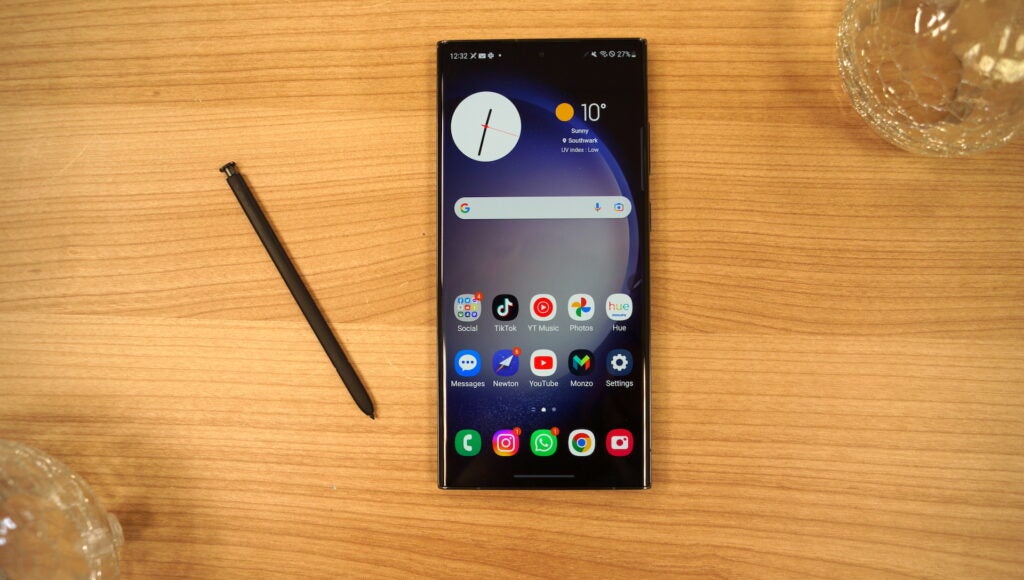
Samsung Galaxy S23 Ultra
The best flagship Android phone
Pros
- 200MP camera delivers in both well-lit and low-light conditions
- Top-notch performance from the Snapdragon 8 Gen 2 for Galaxy
- All-day battery life
- Stunningly detailed 6.8in 120Hz display
Cons
- Very expensive
- Relatively slow 45W charging
- Difficult to use one-handed
Samsung’s 2023 flagship is here in the form of the Galaxy S23 Ultra, and it has taken the top spot in our list of the best phones you can buy right now. Our expert reviewer felt that while the phone is certainly big, it shines thanks to an unmatched camera, stunning display, an included S Pen and very good battery life.
The star of the show, and the biggest upgrade over the outgoing S22 Ultra, is the new 200MP main rear camera. The snaps our expert tester pulled out of this phone show clear improvements over the iPhone 14 Pro and Pixel 7 Pro, with swathes of detail in all manner of conditions. Low-light performance is sublime, with our reviewer claiming it gave him extra confidence to pull off any shot he wanted.
Battery life was a bit of a concern with the Galaxy S22 Ultra, falling below the iPhone 14 Pro Max by a considerable margin. We were much more impressed with the S23 Ultra, having no issues getting through a busy day with over 20% left when it came to bedtime. With the physical battery being the same as before, a lot of this optimisation will come down to the next chip. For the first time in a number of years, Samsung is using the same chipset worldwide – ensuring everyone gets the same feature set.
The Qualcomm Snapdragon 8 Gen 2 for Galaxy performs well, even if it’s not quite as quick in benchmark tests as the iPhone 14 Pro series. Still, we had no qualms and it ran intensive games and apps with ease.
Elsewhere the phone remains similar to its predecessor, which is no bad thing. It’s large (which might put some off), with a gorgeous 120Hz display complete with S Pen support for quick doodles and notes.
Of course, one of the big things holding the S23 Ultra back is the price. If you want a slightly cheaper – but still very capable – Android superphone then the outgoing Samsung Galaxy S22 Ultra remains an admirable performer if you can find it at a heavy discount. There’s also the more modest Galaxy S23 and Galaxy S23 Plus – although these do miss out on the big camera upgrades and S Pen support.
Reviewer: Lewis Painter
Full review: Samsung Galaxy S23 Ultra review

Apple iPhone 15 Pro Max
The best iPhone
Pros
- It has USB-C (finally)
- 5x zoom is welcome
- Much comfier to hold and use; so much lighter
Cons
- The Action Button is welcome – but it could do more
- No 128GB option means higher price
If you’re looking for a true flagship phone and want iOS, as opposed to Android, you’re going to be looking at the iPhone 15 Pro Max – the current best iPhone on the market.
The iPhone 15 Pro Max offers the very best of Apple’s tech, with returning staples like Dynamic Island and the stunning 6.7-inch ProMotion display with an adaptive 120Hz refresh rate that makes everything feel buttery smooth, from general swiping to gaming.
There’s more to it than its large display however; the iPhone 15 Pro Max introduces a new Action Button in place of the volume slider, allowing you to program shortcuts to the press of a button. This ranges from basic functions like turning on the torch to more advanced options like activating a shortcut to control smart home tech, and really makes accessing apps and shortcuts a breeze.
There’s also an upgraded titanium chassis in place of the stainless steel of its predecessor. That not only makes the iPhone less of a fingerprint magnet, but it’s also much lighter this time around too. Combined with impressively small bezels and slightly rounded edges, it feels much nicer to hold and use.
It’s also incredibly performant with the use of the new 3nm A17 Pro chipset, allowing the iPhone 15 Pro Max to stay comfortably ahead of the Android competition in terms of day-to-day performance – and with console-level games coming to the App Store in the coming months, you’ll see a real benefit to the top-end chipset too.
Interestingly, the camera setup is unique even compared to the regular iPhone 15 Pro, boasting an upgraded 5x optical zoom alongside the same 12MP ultrawide and 48MP main lenses as its predecessor that allows it to get even closer to the subject without physically moving. It’s still not as capable as the likes of the Galaxy S23 Ultra, but it’s closer than ever.
Throw in comfortable all-day battery life, the switch from Lightning to USB-C and a whole host of software features courtesy of iOS 17 and you’ve got as close to the perfect iPhone that we’ve seen so far.
Reviewer: Max Parker
Full review: Apple iPhone 15 Pro Max review

Google Pixel 8 Pro
The best software
Pros
- The bright, flat screen is stunning
- Often incredible camera performance across all sensors and lenses
- AI features offer unique software tricks
- 7 years of updates
Cons
- Uncomfortable to hold
- Temperature sensor is pointless
- Performance not as strong as similarly priced phones
- Notable price increase over 7 Pro
The Google Pixel 8 Pro is a fantastic Android phone that, even with a price rise, still undercuts rivals like the Samsung Galaxy S23 Ultra when it comes to price, without ditching too many features.
Google’s latest flagship, launched alongside the smaller Pixel 8, ticks just about all the boxes our reviewers look for in a phone that ends up on this list. It has a great screen with a smooth adaptive 120Hz refresh rate and impressive max brightness that makes it easy to use in daylight, accompanied by a sleek design with a new matte finish, capable internals thanks to the Tensor G3 and battery life that can compete with the best around.
But there are really two areas where the Pixel 8 Pro stands out compared to the Android competition. The biggest is the camera performance. Our reviewer was very impressed with the photography skills of this phone, praising its true-to-life skin tones, colours and crisp nature of images. It handles skin and pictures of faces better than the iPhone 15 Pro, or Samsung Galaxy S23 Ultra.
There are lots of software tricks in the camera app too, all powered by the AI focus of the Tensor G3. This year’s model introduces new features like Best Take which uses AI to swap out bad poses in group selfies, while a new video feature allows you to remove annoying background noises easily. This is in addition to existing fan favourites like Magic Eraser, Magic Unblur and more to get the perfect photo.
The rest of the phone’s software is great too. It offers a clean approach to Android 14 with a few unique Pixel features, again powered by the phone’s AI-focused chipset. However, the biggest improvement is the long-term software support, with Google committing to an industry-leading 7 years of OS upgrades with the Pixel 8 range that’ll take it through to Android 21.
Reviewer: Max Parker
Full review: Google Pixel 8 Pro Review

Apple iPhone 15 Pro
The best compact iPhone
Pros
- Lightweight and more comfortable to hold
- Great camera performance in most conditions
- Incredible A17 Pro power
- Handy Action Button
Cons
- Same 3x telephoto as its predecessor
- Sluggish charging
If you’re looking for an iPhone that not just gets everything done but also offers a more compact experience than the 6.7-inch display of the iPhone 15 Pro Max, then your best bet would be the iPhone 15 Pro.
Despite the more pocketable dimensions of the 15 Pro, we found that the display experience was just as top-notch with great HDR performance and impressive peak brightness that makes both watching Netflix and playing games look great.
It also packs other key improvements of the top-end iPhone 15 Pro Max, including the new Action button, a switch from stainless steel to titanium and rounded edges that make the phone nicer to hold, as well as the top-end A17 Pro chipset, making for a capable compact iPhone.
However, it does miss out on the 5x optical camera present on the top-end iPhone, instead sporting the same 3.5x lens as the iPhone 14 Pro alongside a 48MP main and 12MP ultrawide lenses. And while still capable of all-day battery life, the compact design means it falls short of the extended battery life of the Pro Max.
Reviewer: Lewis Painter
Full review: iPhone 15 Pro Review

Xiaomi 13 Pro
The best big Android
Pros
- Premium, high-end design
- Top-end 120Hz AMOLED display
- Capable triple 50MP camera offering
- Rapid 120W fast charging tech
Cons
- MIUI 14 takes a lot of getting used to
- Not as capable in low-light as competitors with a 1-inch sensor
- Plenty of pre-installed apps
While the Samsung Galaxy S23 Ultra technically has the largest display of any phone in this list, it’s made to feel even larger by its boxy design. So much so, in fact, that it’s pretty hard to use one-handed. That’s where the Xiaomi 13 Pro comes in, measuring in at a smidge less at 6.78 inches but with a curvy design that makes it comfortable to hold and use.
It’s not just simply a large display either; it’s an AMOLED panel packed with premium specs including a WQHD+ resolution, LTPO support that allows it to drop down to just 1Hz to save battery life, along with support for HDR10+ and Dolby Vision with the display maxing out at a retina-burning 1900nits when watching the latter.
With all that said, it should come as no surprise that content, especially HDR content, looked absolutely stunning on the Xiaomi 13 Pro, coupled with the vivid colours, deep blacks and excellent contrast on offer from AMOLED panels.
It’s not just a good phone for watching movies on Netflix though; this is Xiaomi’s flagship and its specs reflect this, including a huge 1-inch sensor powering the main rear-facing 50MP camera that delivers truly impressive photography. That’s coupled with one of the best 50MP 3x telephoto lenses we’ve ever seen, delivering DSLR-level bokeh effects for both portraits and close-ups, and a 50MP ultra-wide too.
There’s also top-notch performance from the top-end Snapdragon 8 Gen 2, a 5000mAh battery with rapid 120W charging that’ll go from flat to full in 24 minutes as well as 50W wireless charging support.
The only real let-down is Xiaomi’s MIUI 14. It’s not a bad skin – not as bad as it used to be, anyway – but it does come with a notable level of bloatware ranging from the handy (like Spotify) to the downright random (like QEEQ car rental) and UI quirks will take some getting used to too.
Reviewer: Lewis Painter
Full review: Xiaomi 13 Pro Review

OnePlus 11
The best value
Pros
- Stunning 6.7in AMOLED display
- Solid flagship performance
- Great rear camera performance
- All-day battery life
Cons
- No wireless charging
- Basic selfie camera setup
OnePlus smartphones have been fine, but not particularly exceptional, over the past few years. However, that’s certainly not the case with this year’s OnePlus 11.
The Android flagship offers a competitive range of features at a cheaper price than many rivals featured in this chart, starting at just £729. That includes the 6.7-inch AMOLED display with adaptive refresh rate tech that lets it go as high as 120Hz and as low as 1Hz to provide a buttery-smooth experience that doesn’t come at the sacrifice of battery life. It also boasts support for Dolby Vision and HDR10+, and the slight curvature to the edges helps it sit comfortably in the hand.
It’s more than just a great display though. It boasts Qualcomm’s latest Snapdragon 8 Gen 2 with impressive CPU and GPU performance, a 5,000mAh battery that’ll last all day and then some and 100W SuperVOOC charging that’ll get you from flat to full in less than half an hour. There’s also the benefit of the highly customisable OxygenOS 13, along with OnePlus’ promise of four years of OS upgrades and five years of security updates.
That’s all great but it’s the camera offering that truly stands out. The 50MP main rear snapper is a capable bit of kit able to capture detailed, vibrant images both during the day and at night. In fact, there have been massive gains in low-light photography compared to the OnePlus 10 Pro. Camera tuning is also much better, with a consistent colour pallet across all three rear lenses.
It’s not the perfect phone, lacking popular features like wireless charging and an official IP rating, but it offers one of the best all-round experiences at a price point cheaper than many rivals, making it an easy recommendation in our books.
Reviewer: Lewis Painter
Full review: OnePlus 11 review

Asus ROG Phone 7 Ultimate
The best phone for gaming
Pros
- Elite performance
- Mammoth battery life
- Loud and booming speakers
- AirTriggers improve gaming controls
Cons
- Very expensive
- Too similar to ROG Phone 7
If you want the best possible phone for playing games on the go, then our top recommendation goes to the Asus ROG Phone 7 Ultimate.
It may not be the most powerful phone (the iPhone 14 Pro Max and Galaxy S23 Ultra both pip the ROG Phone) but our benchmark tests show it’s still right up there thanks to the inclusion of the Snapdragon 8 Gen 2 chip.
It’s the gaming-specific features that really stand out instead, with the AirTriggers allowing you to use and hold the phone like a gamepad, while the Armoury Crate software allows you to display the frame rate and optimise performance settings. There’s a sophisticated cooling system here too, with our tests showing that the ROG Phone 7 can provide a more stable performance than the Galaxy S23 series over extended gaming periods.
The Ultimate edition here also has an animation panel at the rear of the phone, alerting you to incoming calls, new notifications and the charging status while you’re replenishing the huge 6000mAh battery.
Costing over £1000/$1000, this is a seriously expensive phone. Those who want a more versatile phone may want to look elsewhere, as the camera quality is mediocre at best. But if you fancy a phone that excels primarily at gaming, there is no better choice than the Asus ROG Phone 7 Ultimate.
Reviewer: Ryan Jones
Full Review: Asus ROG Phone 7 Ultimate review

Motorola Razr 40 Ultra
The best clamshell foldable
Pros
- Premium clamshell foldable design
- Genuinely useful 3.6-inch exterior display
- Great camera performance from main 12MP sensor
- Top-end 6.9-inch pOLED foldable display
Cons
- Battery could only last about a day
- Snapdragon 8+ Gen 1 is a year old
While the Z Flip from Samsung can be seen as the pioneer of the modern flip phone, the Z Flip 5 isn’t the very best phone we’ve tested with this design. In fact, the best clamshell foldable we’ve reviewed is the Motorola Razr 40 Ultra.
The Razr 40 Ultra represents the pinnacle of clamshell foldables in 2023. Our reviewer was a big fan of the high-end design, the huge and very usable outer display, impressive camera performance and the excellent interior display.
The star of the show here is the 3.6-inch outer display, a feature Samsung nabbed for the Z Flip 5. However, Motorola’s software is a little more open and we found you could do more here, including interacting with more apps like Philips Hue for turning off/on lights and replying to a WhatsApp message. This meant we had to open the phone much less.
The rear 12MP camera with OIS and an f/1.5 lens delivered crisp images in all conditions, even when the light is poor. Performance is good too, even if the Snapdragon 8+ Gen 1 chipset isn’t quite as snappy as the updated version inside Samsung’s latest foldable.
Reviewer: Lewis Painter
Full review: Motorola Razr 40 Ultra

OnePlus Open
The best book-style foldable
Pros
- Solid foldable hardware with minimal display crease
- Custom foldable camera tech
- Unique Open Canvas multitasking software
- True fast charging capabilities
Cons
- IPX4 water resistance isn’t the best
- Still hefty at 245g
If it’s a book-style foldable phone you want, the best one we’ve reviewed – by some margin – is the OnePlus Open, representing a huge step forward compared to other book-style foldables like the Samsung Galaxy Z Fold 5 and Google Pixel Fold.
That starts with the outer display measuring in at the same 6.31 inches and 20:9 aspect ratio as a standard smartphone, and with identical top-end specs as the larger inner display including an adaptive 120Hz refresh rate and 2800nits peak brightness, there’s no compromise here. It’s a great screen for replying to texts, scrolling through Instagram and anything else you’d do on a phone.
Of course, it’s the inner display that’s most important, and OnePlus has done an impressive job here. Sporting a 7.82-inch OLED display, it’s bigger than the Z Fold 5, and more importantly, the crease is much less visible too. Combined with a unique approach to split-screen multitasking that allows for three full-screen apps to be displayed at once, it offers a stellar foldable experience not really present in most of the competition.
It also takes foldable camera tech to the next level with a trio of rear lenses all specifically designed to be used in the OnePlus foldable. That’s headed up by a capable 48MP sensor that delivers great shots both in well-lit and low-light scenarios, but it’s the 64MP perioscope zoom that truly stands out. It offers both 3.5x and 6x optical zoom, with up to 120x digital zoom. It’s not that great at maximum zoom, but even up to 20x, the results are pretty impressive.
Throw in a Snapdragon 8 Gen 2 processor, a large 4805mAh battery with 67W SuperVOOC charging and a cheaper price tag than the competition and you’ve got a very tempting book-style foldable.
Reviewer: Lewis Painter
Full review: OnePlus Open review

Google Pixel 7a
The best mid-range phone
Pros
- Excellent camera for the price
- Plenty of upgrades over the Pixel 6a
- Smart software
- Some nice colour options
Cons
- Middling battery life
- Achingly slow charging
If you’re on the hunt for a compact phone that won’t put a dent in your wallet, the Pixel 7a is an outstanding choice. For the price, there are few better choices out there running Android and this is one of our reviewer’s favourite phones of 2023
When compared to the Pixel 6a, the 7a packs Qi wireless charging, allowing for convenient and cable-free charging, along with a better camera array. Additionally, the phone comes equipped with 8GB of memory and a faster 90Hz screen, offering a more fluid and immersive visual experience compared to the Pixel 6a’s 60Hz display.
The camera on the Pixel 7a is truly remarkable – something we’ve come to expect from Pixel phones. There’s a new 64MP main sensor on the rear, significantly larger than the one found on the Pixel 6a, resulting in improved image quality across different lighting conditions. The camera excels in capturing accurate skin tones, delivering exceptional low-light performance, and ensuring vibrant and true-to-life colours.
Inside, the Pixel 7a shares the same Tensor G2 chip as its more premium siblings: the Pixel 7, Pixel 7 Pro, and upcoming Pixel Fold. While some might desire even more power in the flagship range, at this price point, the Tensor chip offers perfectly adequate performance and handles various AI-driven features seamlessly. Notably, Tensor powers the phone’s intelligent call screening capabilities and outstanding voice recorder functionality.
The Pixel 7a’s 6.1-inch 90Hz OLED display is undeniably impressive, offering sharp visuals and smooth scrolling. Although the larger and sharper screen on the Pixel 7 Pro takes the crown for the best display among the Pixel phones, the Pixel 7a’s screen holds its own and provides an enjoyable viewing experience at a size often hard to find.
One area where the Pixel 7a falls short is its battery life, which can be considered mediocre. On most days, the phone can make it through the day without issue, but on busier days with extensive screen usage, a quick charge might be required to keep it going.
All in all, the Pixel 7a presents itself as a compelling option for those seeking a smaller-sized Pixel phone. With its impressive camera, notable features like wireless charging and 8GB of memory, the Pixel 7a offers excellent value for the price.
Reviewer: Max Parker
Full review: Google Pixel 7a review
We also considered…
FAQs
Most of the phones included within this list feature a high refresh rate display, either at 90Hz or 120Hz. This means the display refreshes at either 90 or 120 times per second, up from the older standard of 60Hz. Having a fast display makes everything feel a bit smoother, be it swiping through Instagram or gaming. The iPhone 15 with its 60Hz display, for example, simply can’t compare to the smooth scrolling you’ll get from the 120Hz iPhone 15 Pro.
Most new phones, especially those over £400/$400, will now support 5G. This is the next step up from 4G, and provides faster and more reliable download speeds in areas where the network is live. 5G varies by country, with the USA touting a tech called mmWave that has far superior speeds if you’re in the right spot. While 5G isn’t a must-have yet, it’s always good to futureproof your purchases and as most new phones come with the tech now you likely won’t miss out.
There are excellent phones at all price points these days, with the best often costing above a grand if you want the very best. If you aren’t so fussed about things like camera performance and display quality you can get an excellent device for £500/$600.
Comparison Specifications
Here are all the specs for our best phones. Remember, the number of megapixels doesn’t always equal a better camera.
Trusted Reviews test data
While test data doesn’t tell the whole story, it’s an important part of our review process. As you can see, the iPhone 14 series is the king when it comes to benchmarks, especially Geekbench, providing top scores.



